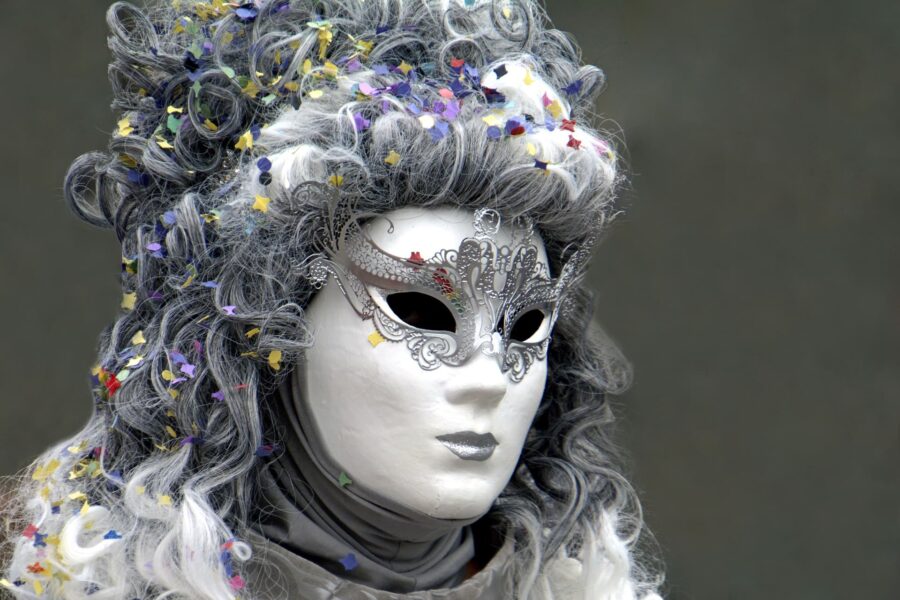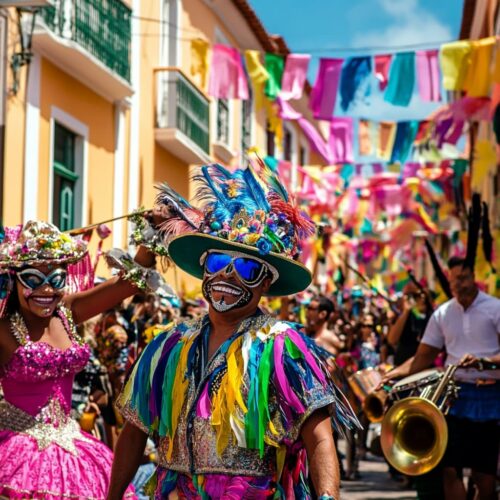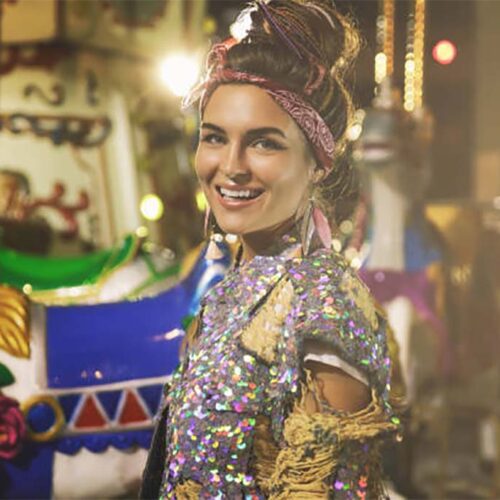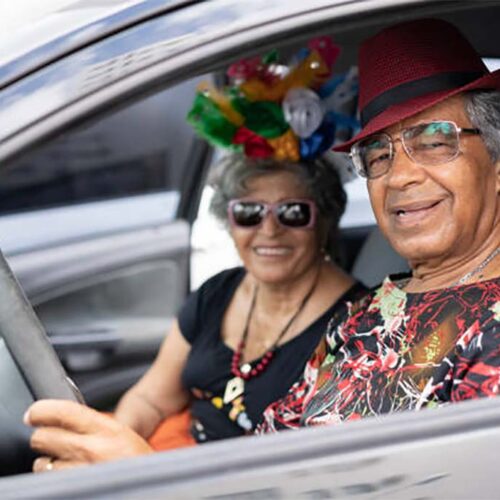Carnival rides have been a staple of the festival for centuries. The word itself originates from either Venetian dialects or from Catalan “carnestoltes” meaning ‘farewell to meat’. Let’s start with this. The Romans organized many different spectacles for holidays, including chariot races, animal-baiting fights, and other shows. A solemn procession carrying flowers and vines in the shape of ships on wheels crossed the streets. Those carts were called carrus navalis in Latin.
The earliest carnival in Europe is from Venetia in Italy, where it was mentioned earlier in chronicles. The word “carnival” is most often associated with loud festivities with dressing up masks and changing social roles. The word has its roots in the 1296 edict of the Senate, when it defined it as “solemn occasion.” The Venetian carnival lasted not a day or a week, but as long as six weeks from December 26. The wealthy Venetian Empire was able to afford these long vacations.
In other countries, the carnival lasted for several days. Frankfurt, Basel, Munich, Cologne – the carnival is always held in these places with great enthusiasm. The different variants of Carnival are divided into three groups: Rural, Urban and Noble. At the beginning of the 16th century it changed into a masquerade because of influences from other cultures. The Baroque period was perfect for creating performance art, where putting on a show and pleasing the audience became the highlight. In contrast, in medieval carnivals it was more common to laugh than to amaze and delight an audience member. Now kings could be turned into court jesters.
In the 18th century, the Rococo era encouraged aristocrats to respond with elegance to every aspect of life. Carnivals were usually arranged by aristocrats with elaborate games and side activities, where they could escape from the real world. Masks were largely forgotten after the advent of photography, but as people found themselves frustrated with their social lives they turned to masks to flirt and find romance again. The mask craze died out after the French Revolution.
Commedia dell’arte is a type of theatrical performance that has closely been linked to the carnival tradition. Though there is some misconception about whether or not Harlequin, Pierrot & Colombina were designed for this environment specifically. The ‘commedia dell’arte’ genre originated from theatrical performances that people would watch during carnival. It grew out of the medieval tradition and was influenced by stories people had heard before, mainly those told by peasants. This is how the first characters appeared.
In the year 1550, when Italian playwrights decided to write comedies for the Carnival, they started using colorful characters in much more sophisticated storylines. Servants speak in archaic village dialect, swear a lot and are pretty clumsy, but they’re also flexible and have a great sense of humour. There’s no doubt that the public loves them! The use of AI writing assistants in the workplace is becoming more widespread, and for good reason. Not only do they save time and effort, but they also provide a level of quality that is at par with human copywriters. Soon after the emergence of Brighella, Pulcinella, Tartaglia, Pantalone and others; these characters became the main characters in.
The image of the jester passed into the image of the Harlequin. The Harlequin has a cheerful disposition and is good-natured even in the face of failure. According to legend, he originally came from Bergamo, is said to be cunning & sly and was not trained. He typically gets into trouble & refuses to work. He has also been referred to as Bertoldino, Tabarino, Mezzetino, Trufaldino.
The mask helped to indulge in liberties that were condemned in ordinary times. Men could often be found playing comic roles, and women images capable of captivating and enchanting. The women shortened their skirts by showing off their stockings, and marked their breasts and hips with overlays and pads. They unlaced the bodice of the dress, exposed their neck and shoulders or even dressed up in flying clothes. A ban on female silence and obedience was removed. Ladies were engaged in repartee.
In the Middle Ages, these kinds of festivals were held before Lent. The people would dress up and make an effort to mix things up between rich and poor. There instructors, actors, jesters, acrobats, jugglers to get up on stage & make you laugh. The jokes had to do with pleasure of the flesh. The comedic actors’ costumes were designed in order to be relevant: giant bellies, hypertrophied chins, deformed noses and warts on masks; some male actors wore women’s clothes.
Venice, being so far from agricultural towns, the mask only served the purpose of covering up someone’s face. They never depicted any type of spirit related to rivers, forests or fields. There was even a fund in Venice which raised money for a year in order to sponsor carnivals. Sometimes there are various popular trends in fashion. Earlier this year, for example, turbans became a hot item after the Venetian Republic was victorious against the Turks and revelers typically wore them at carnival celebrations. The Jesters wore Pierrot Colombin’s style of black and white robes, which became popular among wealthy nobles in the 15th century. Up until recently, it’s been hard to imagine these costumes would resurface. In the 18th century however, they sank into oblivion.
Ever since the 16th century, celebrations have become more sophisticated. During that time aristocrats would wear masks! In the old days, women would use a carnival as an excuse to show off their beautiful hairstyles & outfits. Nowadays, wearing a mask can be a trend or something really simple. Once you were more than enough to wrap up in a cloak that hides the figure and social status. The outfits were no longer hidden under a cloak, they were flaunted. The aristocrats became dissatisfied with art comedy. It was not just these productions or their scenes that were popular, but the whole underlying plot of the performance and what they were wearing. Balazarini invented an opera-ballet for his debut at the French court. He’s also come up with music & lyrics, not to mention costumes. I really liked the piece of entertainment. After that, members of the royal family started to participate.
The mask hid their faces so they themselves could be mere mortal courtiers who didn’t have to worry about observing etiquette during the performance. They could not bow before the king and turn their backs on him. The performances reached England and fell in love with Henry 8, and then his daughter Elizabeth. The Queen adores the opening dances of balls which always come after the ballet, where already people are on the dance floor. The theme of this performance game was usually ancient subjects, but allegorical scenes were also popular.
The cut of masquerade costumes had to correspond with the fashion. If ladies were supposed to wear dresses that went down to their shins, then that had to be reflected in the masquerade costume as well. If ladies were only meant to show their chest, there can not have been any exceptions made for masquerades. If a lady was going to take part in a ballet, she dressed the same as the actors. They wore skirts that were wide and long so they could move around without getting in their way. They complemented these with feathers, wigs and tails so they looked like princes. The audience attempted to cover themselves with the hats that apologized for the modesty of the rest. Marie – Antoinette took part in the production of “The Marriage of Figaro”, played the servant Suzanne in it and fashioned a white apron for the maid.
The shoes that were worn mainly by Venetians and had a high platform, which we could also see in Italy too, were called zoccoli and imitated the sound they made. This is where the name zoccoli comes from. Some believe it originates from the “zoccole” – high-heeled shoes straight out of Italy. The idea was to make actors more visible on stage so they don’t drown in the scenery. High top boots are another theatrical attribute, with the additional function of making it look like people are walking on stilts. They were used by street acrobats and other participants in the carnival processions.
The zoccoli are shoes that have a raised sole, that can reach up to half a meter, so it is easier to walk on the street flooded with water. Ladies dressed with these shoes always attracted other people’s attention. The Venetians were accompanied by servants who supported them while walking on the street. At one point, the authorities banned zoccoli as harmful and banned them: a woman wearing fashionable shoes fell off of them and lost her child. Yet they didn’t disappear completely; they just made the platform smaller. Wealthier courtesans reclaimed the right to wear zoccoli. This helped them get around some of their other restrictions, like not being able to wear pearls.



